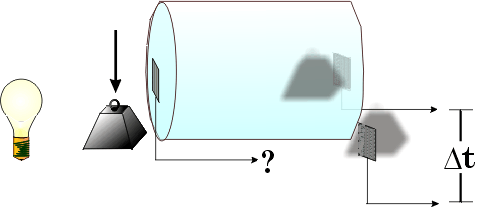
Menendez, A., and Lit, A. Effects of Test Flash and Steady Background Luminance on Simple Visual Reaction Time and Perceived Simultaneity. Investigative Ophthalmology and Visual Science (Abstract Supplement), 1983, 24(3), 95.
Copyright (c) 1983, The Association for Research in Vision and Ophthalmology.
Permission of the author and the publisher is granted to make (download) a
single copy of this abstract, for personal, noncommercial use. All other
rights are reserved.
Modification or redistribution of all or part of this work in any form is
forbidden: Please contact the author and the publisher for permission to
post or copy this work for any purpose.
66
EFFECTS OF TEST-FLASH AND STEADY BACKGROUND LUMINANCE ON SIMPLE VISUAL REACTION TIME (RT) AND PERCEIVED SIMULTANEITY (PS)
Arthur R. Menendez and Alfred Lit, Vanderbilt University, Nashville, TN, and Southern Illinois University, Carbondale, IL.
Whereas background fields increase increment-flash thresholds and suprathreshold RT measures, reports are equivocal in finding increases and decreases in perceptual latency measured by perceived-order methods. To clarify these findings, parametric within-subject comparisons of the two latency measures were made for the same conditions.
RT's and temporal method-of-adjustment settings for perceived onset simultaneity were obtained for 500 ms, 0.50o arc diam, test and probe flashes presented 1.75o arc left and right of fixation in the visual field of the right eye. Test flashes were varied in retinal luminance (Et) and centered on 1.80o arc diam steadily-illuminated backgrounds parametrically varied in luminance. Stimulus onset asynchrony (SOA) required for PS was measured with respect to a 2.60 lg td probe flash. RT and PS test-flash latency were both increased systematically by backgrounds, but RT more so.
Two families of RT and SOA curves decreased exponentially as functions of log Et, each to common asymptotic latency levels. Background-condition RT functions had larger absolute exponents than corresponding PS functions. When mean probe RT was subtracted from test-flash RT of each condition, RT and SOA curves for the no-background condition differed by a constant. No additive factor could reconcile the two measures when backgrounds were employed. Predictions of SOA from RT differences were too large.
Some luminance-dependent aspects of RT are not involved in PS or other
relative latency measures such as Pulfrich and Hess effects. Task demands may
interact centrally with sensory input to determine a neural code for a given task.
These codes may be differentially affected by backgrounds. Psychophysical tasks
may not reveal single functions for (retinal) mechanisms of adaptation.
Supported by EY00383.
Back to Pulfrich Effect Home. University Privacy Policy
The Pulfrich Effect, SIU-C. Last updated 2001-02-03